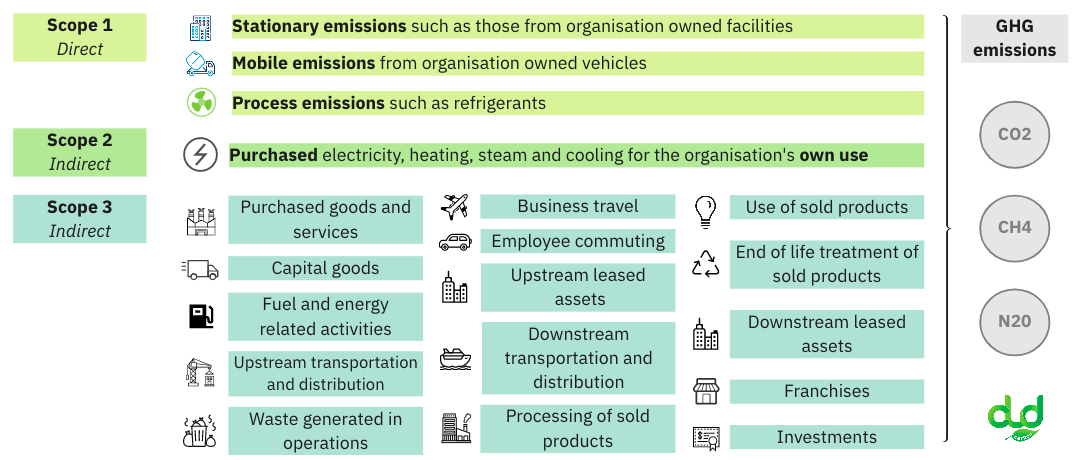Carbon Accounting and Reporting
Carbon accounting is the process of measuring, analysing, and reporting an organisation's greenhouse gas emissions. Emissions include:
Direct emissions from activities such as energy use and transportation
Indirect emissions from activities such as the production of goods and services
The Greenhouse Gas Protocol (GHG Protocol) is a standardised accounting framework used to measure and report greenhouse gas emissions. The protocol includes guidelines for reporting emissions from various sources, including energy use, transportation, industrial processes, and waste management. The GHG Protocol categorises emissions into three scopes.
Reporting emissions according to scope:
Ensures good data management and prevents double counting
Facilitates comparison between organisations within and across sectors
Setting your emissions boundary
Before the process of emissions accounting can even begin however. organisations must decide on their emissions boundary. In short, this is what emissions they are going to include or exclude from the accounting process. In accordance with the GHG Protocol, there are three options here.
Operational control approach - When an organisation uses the operational control approach, it will report on everything where it or one of its subsidiaries has complete authority to create and apply operating policies. This is the most typical method for establishing boundaries.
Equity share approach - Using the equity share approach, an organisation will account for GHG emissions from operations according to its share of equity in the operation. For example, if you owns 50% of a factory that you run operations out of, you will report on 50% of that factories emissions.
Financial control approach - Using the financial control approach, companies should report on 100% of anything in which they bear the majority of risk and benefit from the operation’s financial performance
Ultimately it is up to your organisation what approach is best for you. Consider things such as;
What emissions do we have control over within our organisation?
What emissions can we directly reduce ourselves?
What emissions are outside the scope of our influence?
A final point - It is extremely crucial to remain consistent with your emissions boudary throughout reporting years to ensure comparisons with historic years and progress towards targets remain valid.
Scope 1, 2, and 3
Once an emissions boundary has been defined, it will be much easier to allocate these emissions into scopes.
Scope 1 refers to all emissions generated directly by an organisation while performing activities.
Scope 2 emissions refer to the indirect emissions associated with purchased energy.
Scope 3 refers to all other indirect emissions that occur within the value chain as a result of an organisation’s activities from sources outside the organisation’s ownership and control
What does this mean?
Scope 1 and 2 emissions are largely considered to be under the direct control of an organisation and Scope 3 emissions are largely considered to be indirectly under the control of an organisation. This allows organisations to:
Identify the sources of their emissions
Understand the size and trends of their emissions
Track the progress of their carbon management plans
This distinction is important because it helps organisations to understand and manage their direct and indirect emissions and set targets for reducing them.
Carbon Reporting
Carbon reporting is the process of communicating all this information to key stakeholders, such as investors, customers, and regulators. This can be done through a variety of means, including annual reports, sustainability reports, and public disclosures.
There are a number of carbon reporting frameworks, including:
The bottom line?
In addition to satisfying any legal requirements, reporting carbon emissions allows organisations to:
Demonstrate their commitment to sustainability and accountability
Build trust with key stakeholders
Demonstrates commitments to transparency
Carbon accounting and reporting are essential for any organisation looking to effectively manage and reduce its carbon footprint.


